
This page is meant to help you troubleshoot the Toyota Tacoma P0420 trouble code. It covers the P0420 code’s meaning, symptoms, causes, and possible solutions.
P0420 is the most common OBDII code and is virtually never a breakdown risk.
A failing oxygen sensor or bad catalytic converter are the most common causes of P0420.
Table of Contents
Toyota Tacoma P0420 Quick Info Table

| Definition | P0420: Catalyst System Efficiency Below Threshold |
| Symptoms | Usually just the check engine light |
| Common Causes | Failing O2 sensor or catalytic converter |
| Breakdown Risk? | Rarely (it’s an emissions code) |
| Repair Cost (Parts) | $250 or less |
| Repair Difficulty | O2 sensor replacement is easy, but the catalytic converter can be a challenge |
Toyota Tacoma P0420 OBDII Code Defined
P0420 is generic (has the same meaning for all vehicles made in 1996+) OBDII trouble code. Here’s the technical definition for your truck:
P0420: Catalyst System Efficiency Below Threshold (Bank 1)
Catalyst System Efficiency
Your Tacoma’s exhaust contains hydrocarbons, carbon monoxide, and other harmful gasses. Catalyst system efficiency is the percentage of these chemicals removed from the exhaust system. Oxygen sensors measure these pollutants.
Efficiency Below Threshold
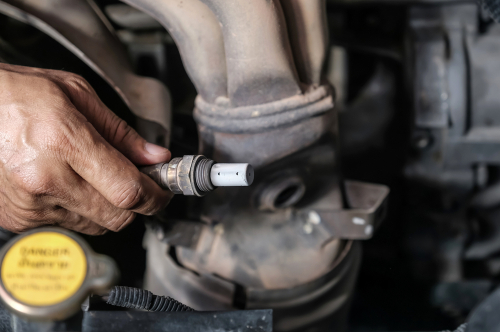
When the readings from the upstream and downstream oxygen sensors show similar readings (not enough pollutants expelled from the exhaust), your truck will throw the service engine soon light (P0420).
These readings shouldn’t match since the catalytic converter is supposed to scrub the pollutants from the exhaust.
When the readings from each O2 sensor get close, the software in your Tacoma’s PCM believes that the catalytic converter is no longer doing its job. This can happen for three reasons:
- The exhaust is escaping before it is measured
- The catalytic converter is losing efficiency and needs to be replaced
- The O2 sensors are not reporting the right readings from the exhaust
Bank 1
You can ignore this section if your Tacoma has an inline engine or if the exhaust manifolds merge into one pipe before the catalytic converter.
Most vehicles only have one catalytic converter But, if your truck has dual exhaust, you’ll need to determine which side of the engine is the bank one side.
Bank one is the side of your Tacoma’s engine with the first cylinder. Typically, the first cylinder is closer to the front of the engine. A quick Google search for your truck’s engine and model year can quickly confirm that. The bank 2 version of this code is P0430.
Toyota Tacoma P0420 Code Symptoms

The P0420 code in a Toyota Tacoma will often be thrown if one of your truck’s oxygen sensors is not functioning correctly.
There are rarely drivability issues associated with P0420. For most people, the first sign that anything is wrong is the service engine soon light coming on.
Here are the typical symptoms that something is wrong when you have code P0420:
- Service Engine Light– Often, this is the only symptom.
- Rotten Smell– A rotten egg or sulfur smell is a telltale sign of a bad catalytic converter.
Related: P0442 Toyota Tacoma
P0420 Causes

Here are the most common causes of P0420 in the Toyota Tacoma:
Likely Causes
- Bad catalytic converter
- Bad O2 sensor
Other Causes
- Exhaust leak
- O2 sensor wiring
- PCM issue
- Overheating converter (usually caused by a misfiring engine, there should be codes)
- Burning oil (overheats converter, usually no code)
- Engine not heating up enough
P0420 Diagnosis: Toyota Tacoma
The most common fix for P0420 in the Toyota Tacoma is a new catalytic converter, followed by an O2 sensor replacement. Before taking your Tacoma into an exhaust shop for an (expensive) new catalytic converter, let’s ensure that’s what you need.
Here’s a good P0420 diagnostic order for the Toyota Tacoma:
1. Check for Other Codes
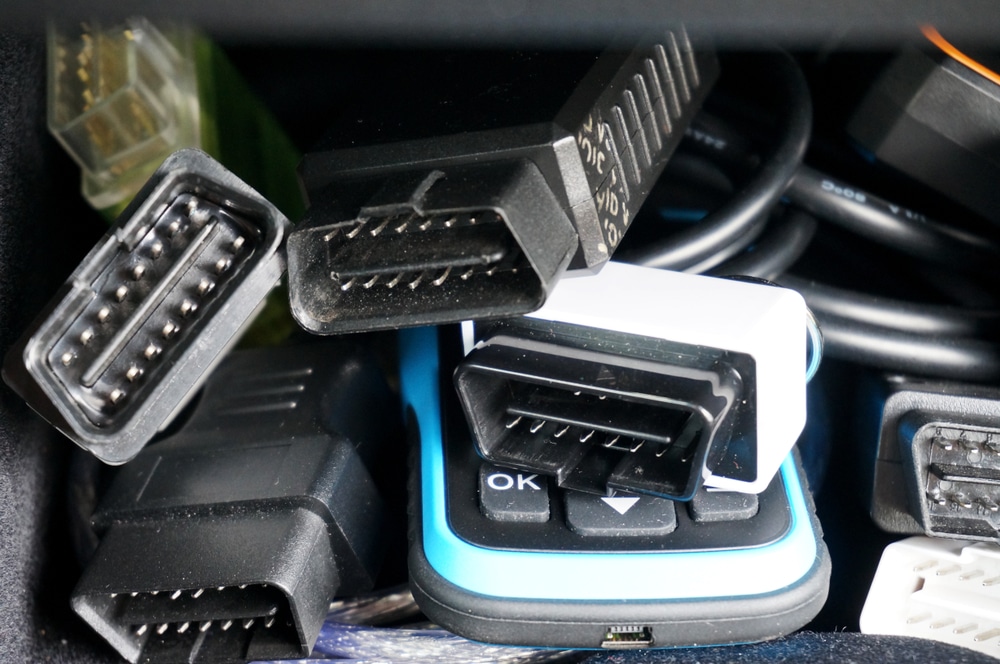
The first thing you want to do when trying to fix P0420 in the Tacoma is to verify there aren’t any other trouble codes. Three types of codes can give clues as to what’s going on with your truck.
Misfire Codes
If you have a misfire-related code (such as P030X, where X is the misfiring cylinder) or P0300 (random multiple misfiring), it can cause the catalytic converter to overheat, which decreases its efficiency and throws P0420.
Engine Temp Sensor Codes
If your Tacoma’s computer doesn’t know the engine temperature, it’ll keep the fuel mixture rich. When this happens, the exhaust the O2 sensors see will be out of range, and it could throw P0420. You should see P0128 along with this code.
O2 Sensor Codes
If your truck has any O2 sensor-related codes, jump to section three.
2. Exhaust Leak (Easy to Check)
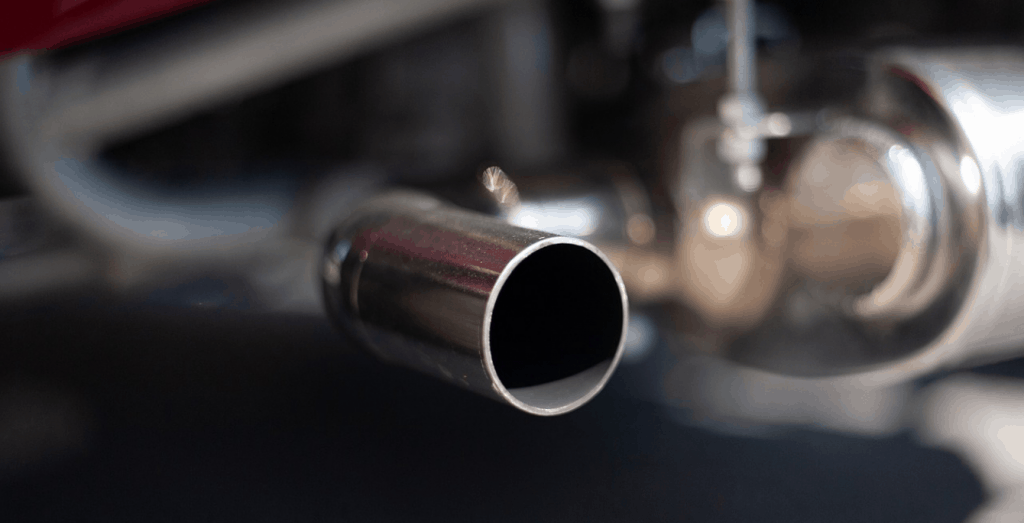
It would be a good idea to check your truck for an exhaust leak first. You should be able to hear it easily when looking underneath your Tacoma.
An exhaust leak can cause P0420 since it causes exhaust gasses to escape unmetered.
If your truck doesn’t have an exhaust leak, you’ll need to test the O2 sensors and/or catalytic converter.
3. Test the Oxygen Sensors
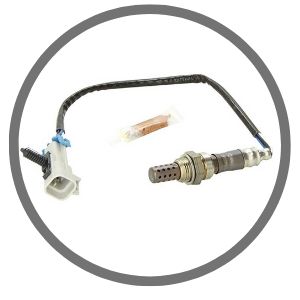
Your Toyota Tacoma has at least two oxygen sensors, one before and one after the catalytic converter (commonly referred to as the upstream and downstream O2 sensors).
- Upstream– The upstream (before the exhaust gas hits the catalytic converter) oxygen sensor measures the exhaust gasses as they exit the engine. The Powertrain Control Module (PCM) uses this data to adjust the air-fuel ratio, ignition timing, and more.
- Downstream– The downstream oxygen sensor’s (after the exhaust exits the catalytic converter) primary function is to verify the catalytic converter is doing its job.
Often, an oxygen sensor is the cause of P0420. When an oxygen sensor has failed, it can cause a false reading and trigger this code in your truck. You can test the sensor before replacing it. The videos below show you how to test one with a multimeter or professional scan tool.
How to Test an Oxygen or O2 Sensor (YouTube: Multimeter and Torch)
How to Check the O2 Sensors (YouTube: Scan Tool)
4. Inspect the O2 Sensor Wiring
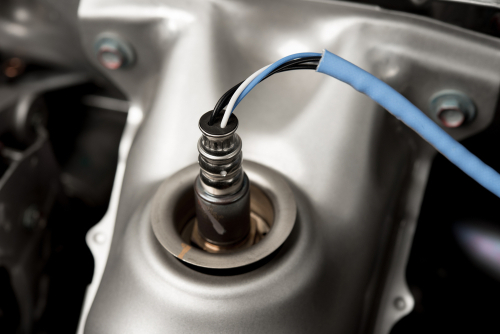
Over time, the oxygen sensor wiring can go bad. It is especially volatile since it is right next to the hot exhaust at all times. The downstream oxygen sensor wiring is also fragile since it is far from the ECM, and the catalytic converter can get hot (more distance to travel = more area to fail).
How to Test Wiring in Under an Hour (2 Car Pros)
5. Catalytic Converter (Most Common)
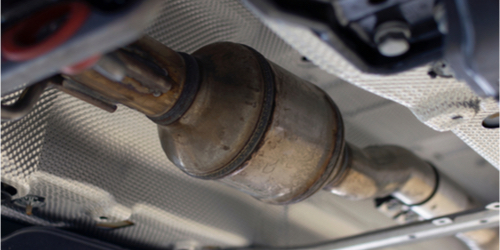
The catalytic converter is responsible for scrubbing out as much pollution as possible from your Tacoma’s exhaust.
Over time, it can lose its ability to strain pollutants out of the exhaust. Although modern catalytic converters are supposed to last the life of most vehicles, over time, they can lose their ability to strain pollutants out of the exhaust.
There could be some underlying problem if it has clogged, such as a misfire, an air/fuel mixture that is too rich, or oil getting into the cylinders. You can test your catalytic converter with a heat gun to see if it’s overheating (see how in the video linked below).
How to Test Your Catalytic Converter in 15 minutes (YouTube)
Conclusion
If there are no codes other than P0420 present, and the O2 sensors are recording data properly, it’s likely your Toyota Tacoma’s catalytic converter has failed, which is what this code is reporting.
